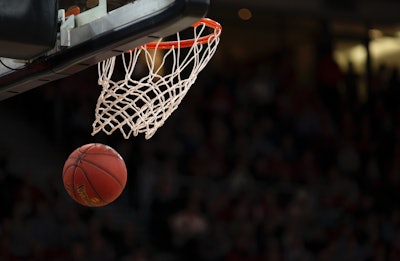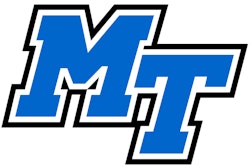
Women are participating in college sports at higher rates than in the past, but men’s participation still outpaces women’s — and the funding gap between women’s and men’s programs continues to widen, according to a report released Thursday by the NCAA inclusion office.
“Title IX has been a federal law for 50 years,” according to the report. which marks the 50th anniversary of Title IX of the Education Amendments of 1972, banning discrimination on the basis of sex in education programs that receive federal funds and is well-known for opening up opportunities in college women’s sports. “This milestone anniversary marks an opportune time to ask why aren’t we there yet? How can we work together to eliminate sex discrimination in education? How can we succeed at providing equitable intercollegiate athletics participation opportunities; at using resources to provide equitable treatment and to create equitable experiences for all student-athletes; and at hiring and retaining diverse leaders who reflect the demographics of the increasingly diverse student-athlete population and serve as impactful role models?”
According to Inside Higher Education, an especially stark finding was that Division I athletic departments typically spend twice as much on men’s programs compared to women’s programs, with the largest disparity in the Division I Football Bowl Subdivision, the roughly 130 institutions that play big-time football. The report found a 23 percent difference in total spending between men’s and women’s athletics programs in Division I and an 8 percent difference in spending in Divisions II and III. The gap in total expenses increased three percentage points in Division I, one percentage point in Division II and stayed the same in Division III over the past five years.
These findings come after an external review of gender equity in NCAA championships, commissioned by the NCAA and conducted by an outside law firm last summer, which found an approximately $35 million spending gap between the men’s and women’s basketball tournaments in 2019.
Moreover, disparities in accommodations during the 2021 NCAA men's and women's basketball Final Fours drew national headlines.
Related: Lawmakers Slam NCAA Over Gender Equity Failures
Across multiple reports on gender equality in sports, “we’re seeing consistent findings in terms of clear increases in opportunities for girls and women,” Ellen J. Staurowsky, a professor of sports media at Ithaca College whose research focuses on equity in college athletics, told Inside Higher Education. “We’re seeing findings that continue to affirm the fact that Title IX did not destroy men’s sports. That misperception had been prevalent for so long. We’re still seeing tremendous gaps in terms of resource allocation.”
She believes there needs to be much more transparency regarding how athletic departments spend their budgets.
“We need to see more specifics about where the money is actually flowing,” she said.
Amy Wilson, NCAA managing director of inclusion and the author of the report, wrote in an email to Inside Higher Education that she hopes the report motivates presidents, chancellors and athletic department heads to reflect on their individual institutions’ practices and “prioritize equity in athletics.”
“I hope the disparities in the overall data spur campus and athletics department leadership to recommit to reviewing their participation opportunities, athletics’ financial aid and student-athlete experiences and treatment in their women’s and men’s athletics programs,” she said.





































